




VOB Virtual Optical Bench Program Series
For image synthesis built-in test objects like disk (diffraction point), radial mira or rectangular mira are supplied. Additionally, the user may use images in standard bitmap format (*.bmp). Image synthesis is done by PSF (point spread function) for a matrix of points on the object plane. The following samples of image analysis were generated with a simple doublet system (Fig. 4-1). Fig. 4-2a shows a picture of the "Schwebebahn" (overhead suspension railway train in Wuppertal, Germany), used as an object. The resulting image (Fig. 4-2) is somewhat blurred due to imperfections of the lens. It is calculated assuming an ideal detector like a superfine grained photographic plate.
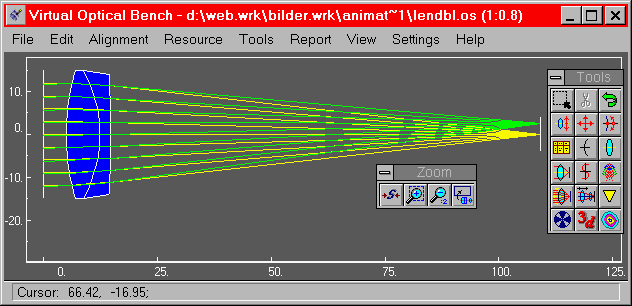
Fig. 4-1: Simple doublet system used for image synthesis examples

|

|
| Fig. 4-2a: Bitmap used as object for image synthesis | Fig. 4-2b: Synthesized image of object in fig 4-2a using doublet system (Fig 4-1) |
The electro-optical features of detectors can be taken into account. Several single element, multi-element detectors and mechanical scanners may be used. Fig. 4-3a shows a map of a matrix area detector, like a CCD. For demonstration purposes the dimensions are rather unusual. The resulting image (fig. 4-3b) is quite pixelized due to the coarse structure of the array.
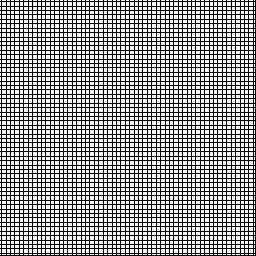
|
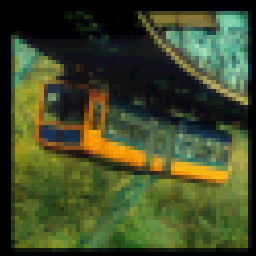
|
| Fig. 4-3a: Map of matrix detector (3 mm * 3 mm), 50 * 50 elements, element size 0.06 * 0.06, center to center distance 0.06 * 0.06 | Fig. 4-3b: Synthesized image (3 mm * 3 mm) with matrix detector (Fig. 4-3a) |
The margins (trenches) between the elements of matrix arrays can be taken into account. While in fig 4-3 the elements are seamlessly arranged (element size = center to center distance), in fig 4-4 a more realistic array with margins is shown. The resulting image is rather dark due to the black margins between the elements.
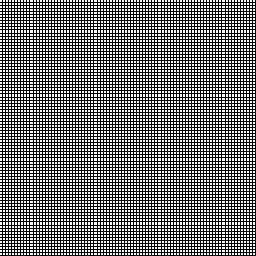
|
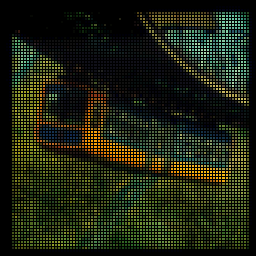
|
| Fig. 4-4a: Map of matrix detector (3 mm * 3 mm), 79 * 79 elements, element size 0.03 * 0.03, center to center distance 0.038 * 0.038 | Fig. 4-4b: Synthesized image (3 mm * 3 mm) with matrix detector (Fig. 4-4a) |
Single and double line arrays (fig. 4.5) are used in fax machines and desktop scanners for PC`s, which are scanned in one dimension over the images. The black stripes are caused by the margins of the elements (s. above).
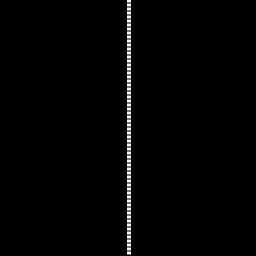
|
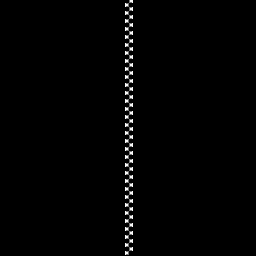
|
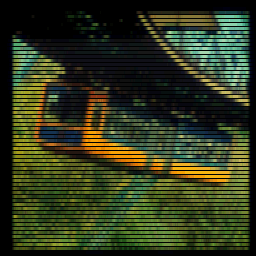
|
| Fig. 4-5a: Map of single line detector (3 mm long), 55 elements, element size 0.05 * 0.05, center to center distance 0.055 | Fig. 4-5b: Map of double line detector (3 mm long), 2 * 28 elements, element size 0.05, center to center distance 0.110 (element to element in one line) | Fig. 4-5c: Synthesized image with single line detector (Fig. 4-5a) scanned horizontally over the image plane |
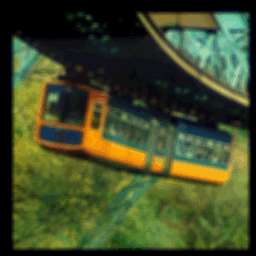
Fig 4-6: Synthesized image with rectangular single element detector (0.08 * 0.08) scanned horizontally and vertically over the image plane |
Figure 4-6 shows the image obtained with a rectangular single element detector which is scanned seamlessly over the image plane. The strong blur is caused by the rather big element size in relation to the image size. |
Webmaster`s note: Soon (ehem, in the next weeks ;-) we will add examples of mechanical scanners taking into account real movement with relaxation of moving element (mirror). Please come in again.
